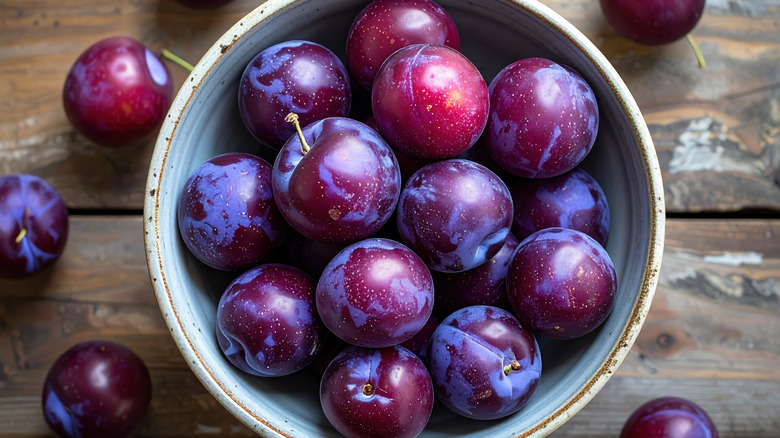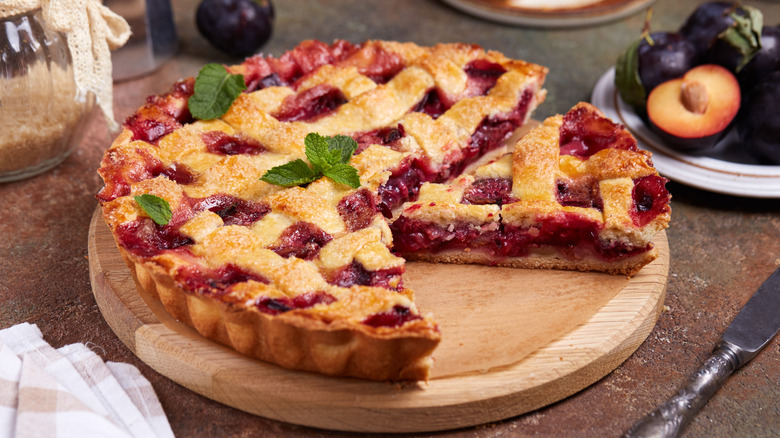How To Choose Perfect Plums Every Time
Plums, for all their sweetness and sunset colors, are a sure sign that fall has arrived. Sure, they show up as early as June, but by the time September rolls in, it's peak season for plums to be baked in pies, blended in chutneys, or paired with cottage cheese. Nearly 95% of America's plums come from California, and with varieties ranging from the leafy Greengage to the blood-red Santa Rosa to the popular purplish Victoria, there's a lot of variety to work with. But only if you know how to pick them.
Whether you're perusing the aisles of the grocery store or exploring your local farmer's market, keep an eye out for firm but not rock-hard plums. Avoid anything that looks bruised, wrinkled, or brown, as those fruits are likely overripe, and may even be rotting inside. A key place to check is the flower end (the bottom of the fruit). Press gently, and it should give a little. But too much, and you might end up with a gooey mess.
Before they reach the shelf, plums are stored in cool spaces to delay ripening, which is why they can feel firm at the store. A reliable way to check if your plum's ready is to give it a sniff. A ripe plum will have a fruity aroma. On the other hand, unripe plums smell of, well, nothing. Another underrated tip: pick it up. A ripe plum should feel heavy in your palm. If it's too light, chances are it's losing moisture. And don't be afraid if your fruit has a white, dusty coating. This is actually natural. It's called 'wax bloom', and you can just wipe it off before eating — simple.
How should you store plums?
Okay, so you've chosen the perfect plums, and now you're back at home, with them neatly piled up in a paper bag on your kitchen counter. Great start. But here's the thing: plums don't last forever. Although they look pretty in a fruit bowl, you've only got three to four days before they start going soft at room temperature. In the fridge, they'll stretch to five. If you're not diving in right away, pop them into a perforated container in the fridge to slow down ripening and prevent mushy disappointment.
Want to hang on to plum season a little longer? Pit them, slice them, and stash them in a freezer bag. Frozen plums are your golden ticket to delicious sorbets and smoothies, and you can add a spoonful of nut butter for a perfectly thick consistency. But really, plums shine when they're fresh and simple. They're low in calories, high in antioxidants, and just sweet enough to satisfy a fruit craving without tipping into dessert territory. That said, they do work well in a dessert, adding juiciness to rustic galettes, upside-down cakes, or warm compotes spooned over ice cream.
And don't forget prunes. When dried, plums turn into chewy, jammy sweets that are perfect chopped into cookies or folded into cinnamon-swirled buns. Not to be confused with dates (we love those too), prunes bring a deeper, slightly tart sweetness that's made for fall baking. Bottom line: choose your plums with care, store them smart, and you'll have a fruit that works just as well fresh off the counter as it does baked into your favorite seasonal treats.

